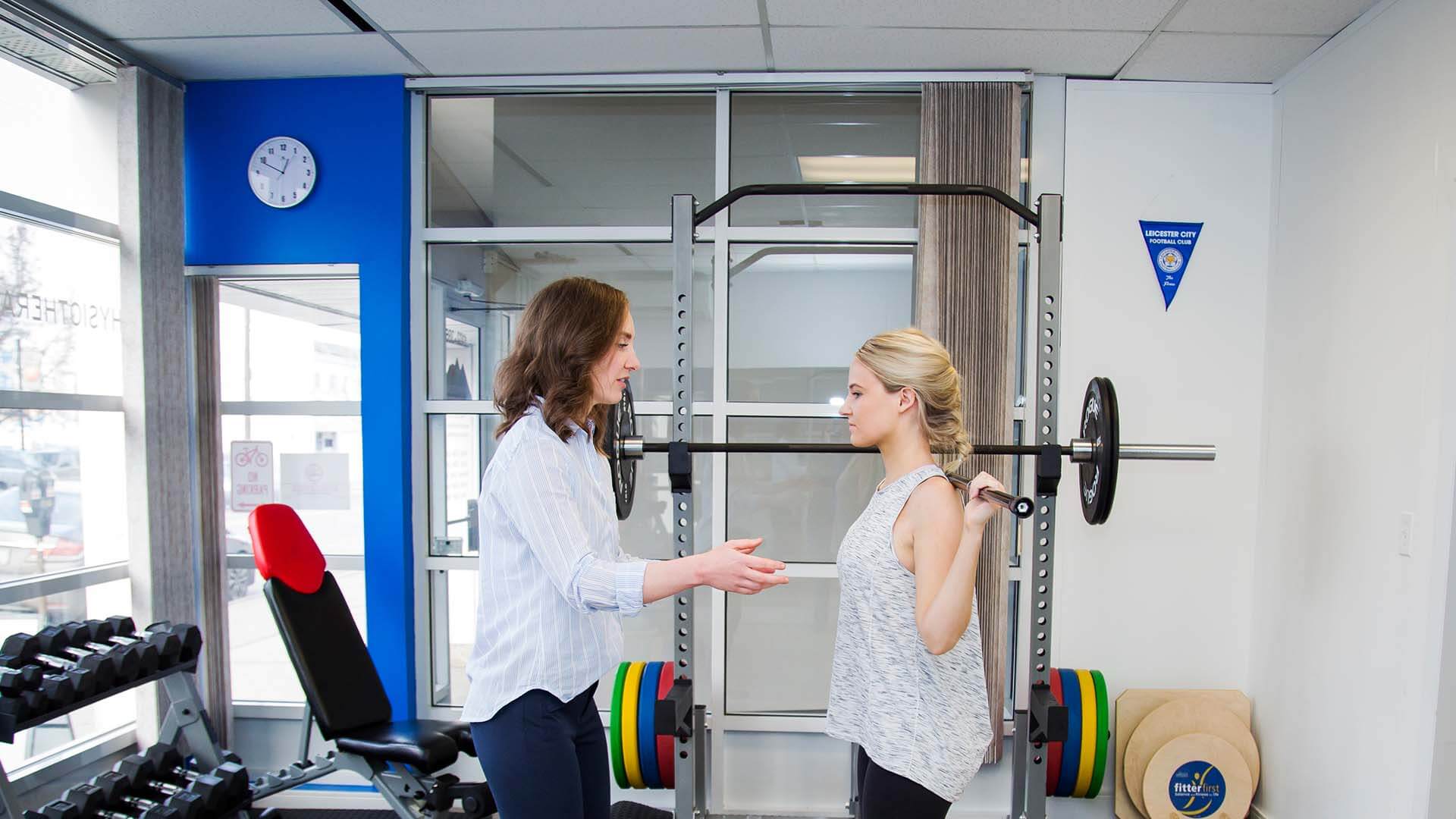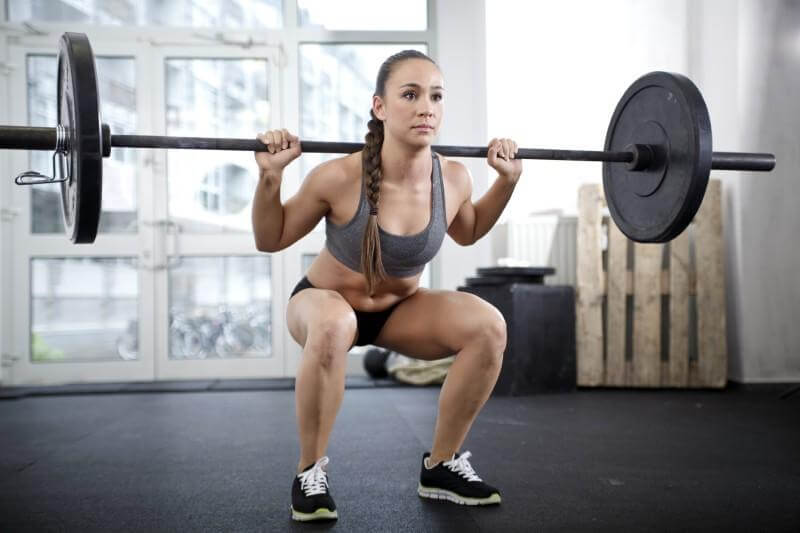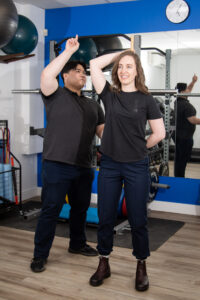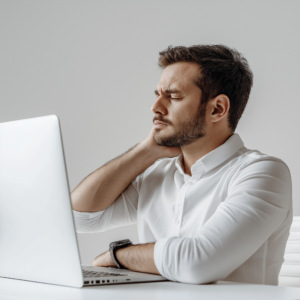We all know that being able to squat is a healthy thing to be able to do. The ability to squat properly will protect your lower back, give you super strong legs and burn a ton of calories. Sounds great right? Unfortunately, so many of the athletes and gym-goers we see in our clinic have some major difficulty with performing their squat-sets, either with or without added weight. Back pain, knee pain and general stiffness and the sensation of being tight all are signs that something is off with their squat. Left uncorrected, this can potentially lead to overloading of the low back and legs, and the risk of significant injury.
So what is the cause of this limitation? Quite often, it is a secondary consequence of the sedentary lifestyle a lot of us find ourselves in nowadays (which is ironic, because we go to the gym to help counter this!). Picture this; for most people, their daily routine looks something like this: they sit and have breakfast. Then they get in their car and drive to work. A few hours sat at a desk before they then sit and have lunch, and then they’re sitting again to complete their afternoon work. After driving home, they sit and have dinner and then they’re on the couch (unless it’s a gym night ?). While of course there are exceptions to this rule, this is how a lot of us spend our days.
At this point, you might be wondering how this has anything to do with your squat. After all, you’re moving when you do your squat, right?
Well, the physical changes that happen in our body when we sit for so long can be quite pronounced.
Keep reading below to learn more about what changes occur, and how it can affect your ability to squat.
1) Weak and tight gluteal muscles
– When you complete a squat, your glutes should be doing a lot of the work. However, if they become tight (which happens when a person spends a lot of time sitting), they then become weak, and can’t work effectively. Weak muscles can cause pain, especially if they’re being asked to do something they aren’t strong enough for (i.e. performing a squat exercise). Secondly, when the glutes can’t help to lower you into your squat or lift you out of it effectively, other muscles, like your hamstring or quadriceps, are having to kick-in to compensate for this. This overuse of other muscles can lead to pain and injury in them too.
2) Tight muscles in your hips, upper back and ankles
– Keeping your form in a squat is vitally important to complete it in a safe and effective manner. Unfortunately, tightness in your hip flexors, upper and lower back and your ankles can all lead to a loss of form as your body tries to compensate and complete the squat movement around these limitations. What this can often lead to is your body leaning forwards to try and get deeper into the squat, which causes the natural curve of your spine to decrease and places excessive stress on the muscles in your lower back and legs. All of the above can be the reason why you might be feeling pain when you squat, or feel your form is off.
3) A weak core
– A strong set of core stability muscles will help to keep your body and spine in an upright and neutral position, which is the position we want your back to be in when you squat. Unfortunately, having a weak core will not let you keep your torso upright, which will cause you to lean forwards and lose your form. As we’ve mentioned already, these issues can and will lead to back pain during your squat.
So what can you do to be able to squat safely and efficiently?
If you are serious about going to the gym and want to work on your squat, it is highly advisable to speak with our Athletic Therapist Lauren Walker about your situation. Lauren, herself a avid gym-goer, has extensive training about finding out what areas of your body are tight and which are weak, and putting this information together to look at your squat and figuring out how to fix it (and you!). Lauren combines a combination of hands on manual therapy and exercise prescription in her practice, which will fit all the pieces of your bodies squat-puzzle together! Remember, if your body isn’t ready to complete a squat effectively, it isn’t safe to do so, and being proactive in correcting this will get you where you want to be with the squat rack.
What should I expect when I see Lauren?
Firstly, she will take a detailed medical history, and get to know you and your goals. She will then assess your muscular strength and joint range of motion, both of which will give her vital information about what can be limiting your ability to squat safely. Then it will be time to enter our private gym space (so make sure you bring your active wear!) and she will asses your squat and other functional movements. After this, she will discuss her findings with you and formulate a plan. In most cases, a combination of hands-on manual therapy and exercise training will be prescribed, all of which has the end goal of allowing you to squat more deeply, heavier and safely. Don’t be surprised if you don’t actually do any squats with the bar initially, as it can take time to build up your glute and core strength and address any muscular tightness you may have.
Does my insurance plan cover Athletic Therapy?
More and more insurance plans do cover Athletic Therapy (AT) in BC. Below are a list of providers who currently do cover AT, although it is definitely advised to call your provider and check (even if they aren’t on the list below) as often AT can be added to your insurance plan.
- Great West Life
- Manulife
- Desjardins
- Greenshield
- Empire
- All Sport
- Hockey Canada
- Cooperators

How can I book an appointment with Lauren?
Very easily! Either call us at 250-493-1152, drop in and say hi or check out our online booking system at https://pentictonphysiotherapy.janeapp.com/








